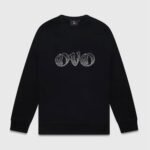Fashion has long been a visual reflection of societal norms, including deeply entrenched gender roles. Traditionally. He men wear suits and ties. She women wear dresses and heels. Ho wever in recent years these rigid distinctions have started to blur. As more individuals and fashion designers challenge the status quo. And the world is witnessing a significant shift toward a more inclusive, fluid approach to fashion. https://barriersclothing.site/
This article explores the historical context of gendered clothing. The impact of breaking these traditional barriers. And how the modern fashion landscape is embracing gender fluidity and diversity in self-expression.
The History of Gendered Clothing
To understand where we are now, it’s essential to look back at how gendered clothing came to be. Historically, the distinctions between men’s and women’s clothing were often functional, reflecting societal roles, power structures, and cultural expectations.
1. The Evolution of Men’s Fashion
Men’s fashion has often centered around practicality and status. In Western society men’s clothing in the 19th century was largely utilitarian—trousers jackets. And waistcoats allowed for ease of movement and were appropriate for the workplace or war. However, these garments were also a symbol of power and authority. The suit, which emerged as a dominant style in the early 20th century, became synonymous with masculinity, professionalism, and respectability.
Even before the industrial revolution, however, men’s clothing wasn’t always this rigid. In ancient Greece and Rome men wore tunics. And in 16th-century Europe nobility adorned themselves in elaborate gowns. And tights—items that today might be labeled “feminine.” The distinction between men’s and women’s clothing has not always been as strict as we think.
2. Women’s Fashion and Social Expectations
For centuries women’s fashion was shaped by their role in society. In many cultures women were expected to be demure nurturing. And primarily concerned with domestic life. Their clothing reflected. This with elaborate restrictive garments such as corsets. And full skirts that limited movement and physical freedom. These designs reinforced the idea that women were delicate and ornamental, emphasizing beauty over function.
While the 20th century brought gradual changes—such as the adoption of trousers by women during World War II—clothing for women continued to serve as a symbol of femininity, reinforcing traditional gender roles.
The Emergence of Gender-Neutral and Androgynous Fashion
The post-war period and the countercultural movements of the 1960s and 1970s began to challenge traditional norms in all areas of society, including fashion. The rise of feminism, the LGBTQ+ rights movement, and increasing visibility of non-binary individuals helped to disrupt traditional notions of gendered clothing. Androgyny, which blends masculine and feminine characteristics, started to gain acceptance in mainstream fashion. https://billionairestudiosclothing.us/
1. Unisex Fashion in the 1960s and 70s
The late 1960s and early 1970s saw the emergence of unisex fashion, which rejected traditional gender distinctions in clothing. Designers like Pierre Cardin and Rudi Gernreich challenged gender norms by creating garments that could be worn by anyone. We regardless of their gender. This era was marked by an embrace of fluidity. They with men wearing flowing, colorful garments and women opting for pantsuits and blazers.
The concept of unisex clothing wasn’t just about aesthetics—it was also a political statement. Clothing was used to challenge the patriarchy and gender roles, pushing for equality and freedom of expression.
2. Androgyny in the 1980s and Beyond
The 1980s took androgynous fashion further with music icons like David Bowie Prince. And Annie Lennox, who became famous for their gender-bending styles. Bowie’s Ziggy Stardust persona. With his makeup, flowing outfits, and glam-rock flair, became a powerful example of how clothing could transcend gender norms. Prince’s bold choice to wear high heels and lace, while maintaining a sense of power and masculinity, shattered preconceived notions about what men could or should wear.
This era showed that fashion could be both playful and revolutionary, and it laid the groundwork for today’s gender-fluid fashion movement.
Breaking the Binary: The Rise of Gender-Fluid Fashion Today
The 21st century has seen a growing movement toward dismantling traditional gender norms in fashion. Designers, celebrities, and everyday people are embracing clothing that allows them to express their true selves, free from the constraints of societal expectations.
1. Non-Binary Fashion and the Influence of LGBTQ+ Communities
At the forefront of this shift are non-binary and gender non-conforming individuals, whose fashion choices challenge the binary understanding of male and female clothing. Non-binary fashion doesn’t adhere to a specific set of rules; it’s about wearing what feels right, whether that means a mix of traditionally “masculine” and “feminine” elements or creating entirely new looks.
The visibility of non-binary celebrities like Sam Smith, Jonathan Van Ness, and Janelle Monáe has helped bring gender-fluid fashion into the mainstream. Designers like Telfar Palomo Spain. And Harris Reed are known for their avant-garde gender. There fluid collections which blur the lines between male. And female fashion. With offering pieces that can be worn by anyone.
2. Mainstream Brands Embrace Gender-Neutral Collections
Recognizing the demand for more inclusive fashion, mainstream brands are also beginning to release gender-neutral collections. Brands like Zara, H&M, and Levi’s have introduced unisex lines that are free from the rigid categorizations of men’s and women’s sections. These collections focus on versatility, offering simple, well-designed pieces that are not confined to gender-specific labels.
High fashion has followed suit. Designers like Gucci, Thom Browne, and Rick Owens have made waves in the industry by incorporating gender-neutral designs into their collections. Alessandro Michele, the creative director of Gucci, has been instrumental in pushing the boundaries of traditional gender norms in fashion, creating collections that celebrate fluidity and freedom.
3. Breaking Gender Norms in Pop Culture
Pop culture has always played a significant role in shaping societal views on fashion, and today’s celebrities are instrumental in breaking gender barriers in clothing. Icons like Harry Styles, who famously donned a Gucci dress on the cover of Vogue, and Billy Porter, whose red carpet appearances often include stunning gowns, have shown the world that fashion doesn’t need to adhere to a binary system.
These moments are not just about fashion—they are about challenging the status quo and pushing society to rethink its preconceived notions about gender and self-expression.
The Impact of Breaking Gender Norms in Fashion
Breaking traditional gender barriers in fashion has far-reaching effects, not just in terms of clothing but also in how society views gender as a whole. The shift toward gender-fluid fashion is a reflection of broader cultural changes that are taking place around the world.
1. Challenging Stereotypes and Promoting Equality
One of the most significant impacts of breaking gender norms in fashion is the dismantling of harmful stereotypes. When men wear skirts and women wear suits, it challenges the idea that certain characteristics—strength, vulnerability, power, softness—are inherently tied to gender. By removing these limitations, fashion allows for a more nuanced understanding of what it means to be masculine or feminine.
This shift also promotes greater equality. When clothing is no longer restricted by gender, it opens up possibilities for everyone to dress in a way that feels authentic to them, free from judgment or societal pressure.
2. Empowerment Through Self-Expression
Clothing is a powerful tool for self-expression, and breaking gender norms in fashion allows individuals to express their true selves more freely. For many people, being able to wear what they want without fear of judgment is liberating. It allows them to explore different aspects of their identity and present themselves to the world in a way that feels authentic.
This sense of empowerment is especially important for marginalized communities. He such as the LGBTQ+ community. Who have long been excluded from mainstream fashion. By embracing gender-fluid fashion, individuals are able to claim space and visibility in a world that has often tried to suppress their voices.
3. The Future of Fashion: Inclusivity and Diversity
The movement toward gender-neutral fashion is just one part of a broader trend toward inclusivity and diversity in the fashion industry. As more designers brands. And consumers reject traditional gender norms. We are seeing a shift toward clothing that is designed for everyone. We regardless of gender, size, race, or ability.
The future of fashion is one that celebrates individuality and self-expression, where people are free to wear what they love without fear of judgment or exclusion. As society continues to evolve, fashion will remain a powerful tool for challenging norms, promoting equality, and empowering individuals to live authentically.
Conclusion: A New Era of Fashion Freedom
The breaking of traditional gender norms in clothing marks the beginning of a new era—one where fashion is no longer confined by rigid definitions of masculinity and femininity. Today, individuals are free to express themselves through clothing in ways that were unimaginable just a few decades ago.
From the runways of Paris to the streets of New York, gender-fluid fashion is redefining what it means to dress for success, power, and authenticity. As these barriers continue to fall, we move closer to a world where clothing is a reflection of who we are, not just the roles society expects us to play.




